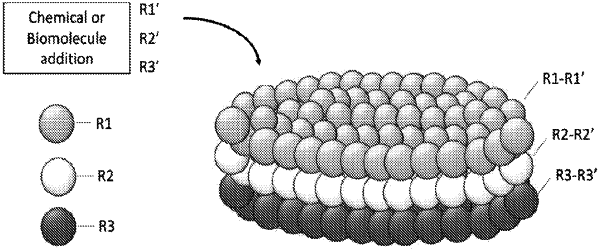| CPC C08G 63/912 (2013.01) [A61K 38/177 (2013.01); A61K 47/545 (2017.08); A61K 47/593 (2017.08); A61K 47/64 (2017.08); A61K 47/6927 (2017.08)] | 22 Claims |

|
1. A polymer scaffold comprising:
a scaffold of a plurality of microparticles comprising a polymer modified to have a reactive handle, wherein the reactive handle is distributed homogeneously throughout the polymer scaffold, the reactive handle capable of reacting with a biomolecule to form a covalent or non-covalent bond between the biomolecule and the polymer scaffold, wherein the microparticles further comprise a second polymer and the second polymer is not modified with a reactive handle and the polymer modified to have a reactive handle and the second polymer are provided in a weight ratio of about 100:1 to 1:100; and
wherein the reactive handle is provided in an amount sufficient to bind the biomolecule in an amount sufficient to exert a bioactivity, and
wherein the microparticles are microspheres and the microspheres are arranged in a layer.
|